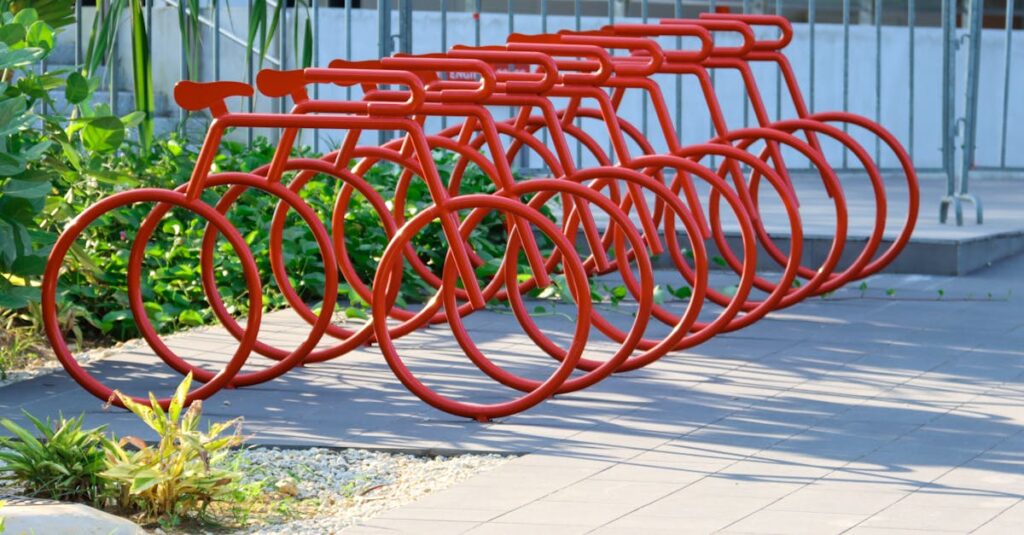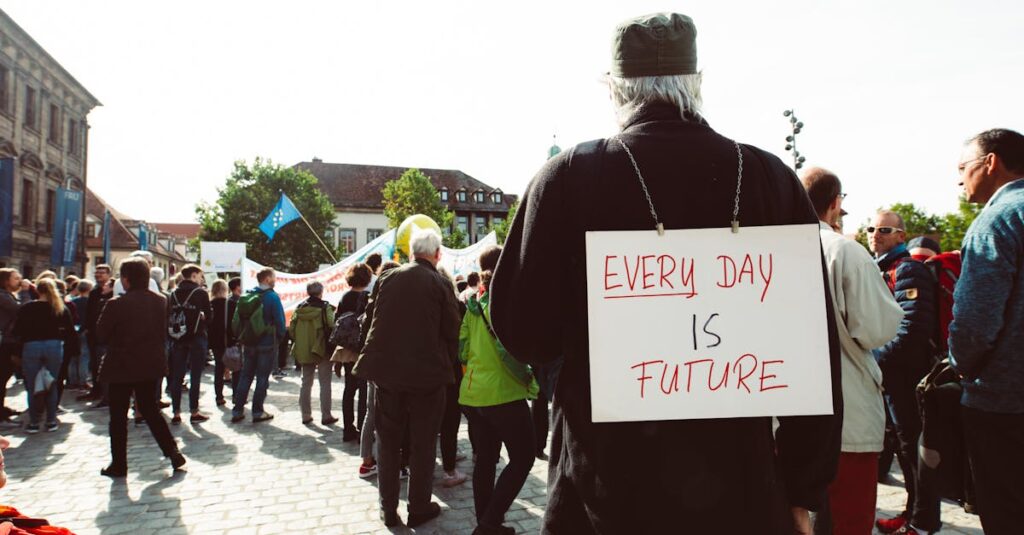Singapore isn’t called the “City in a Garden” for nothing. This vibrant metropolis has masterfully transformed itself from a concrete jungle into a lush paradise where skyscrapers and nature coexist in perfect harmony. With over 47% of the city covered in greenery, Singapore stands as a global leader in urban green space development.
From the iconic Gardens by the Bay to neighborhood parks tucked between housing blocks, Singapore’s commitment to creating green spaces has redefined urban living. These verdant oases don’t just make the city prettier – they’re working overtime as natural air conditioners, stress relievers and biodiversity hotspots. It’s where morning tai chi sessions meet evening nature walks and where local wildlife finds refuge amid the urban hustle.
Urban Green Spaces in Singapore
Singapore’s urban planning strategy emphasizes the integration of nature into city development through comprehensive green initiatives. This vision transforms concrete landscapes into vibrant ecosystems that balance urbanization with environmental sustainability.
The Garden City Movement
Singapore launched its Garden City movement in 1967 under Lee Kuan Yew’s leadership. The initiative introduced extensive tree-planting programs along streets roads parks resulting in over 2 million trees planted across the island. Strategic landscaping guidelines required developers to incorporate green spaces in new construction projects. The National Parks Board established a network of park connectors linking major green spaces creating seamless corridors for wildlife movement. This movement laid the foundation for Singapore’s transformation from a tropical island to an internationally recognized model of urban greenery.
Building a City in Nature
Singapore’s City in Nature vision expands beyond traditional landscaping to create integrated ecosystems. The Green Plan 2030 targets adding 1000 hectares of green spaces including new nature parks sky gardens vertical forests. Advanced technologies like drone-enabled tree management remote sensors monitor plant health ensure sustainable maintenance. The plan incorporates climate-resilient landscapes that protect biodiversity reduce urban heat effects. Public spaces feature rain gardens bioswales natural drainage systems that manage stormwater while creating recreational areas. These initiatives demonstrate Singapore’s commitment to environmental stewardship urban livability.
| Green Space Metrics | Current Status | 2030 Target |
|---|---|---|
| Green Cover | 47% | 50% |
| Nature Parks | 350 hectares | 1350 hectares |
| Park Connectors | 340 km | 500 km |
Types of Urban Green Spaces in Singapore
Singapore features diverse categories of urban green spaces that serve multiple ecological functions. Each type contributes uniquely to the city’s green cover while providing distinct environmental benefits.
Parks and Nature Reserves
Singapore’s parks system encompasses 350 regional parks connected by 340 kilometers of green corridors. The Botanic Gardens, a UNESCO World Heritage site, spans 82 hectares featuring rare plant species endemic to Southeast Asia. Bukit Timah Nature Reserve contains 163 hectares of primary rainforest housing 840 flowering plants species. MacRitchie Reservoir Park combines recreational facilities with natural habitats, including a 250-meter suspension bridge offering canopy views. These spaces protect native biodiversity while providing recreational opportunities for residents.
Vertical Gardens and Green Buildings
Singapore leads innovative vertical greening with 300 hectares of skyrise vegetation. Marina Bay Financial Centre incorporates 125,000 plants across its three towers. The Parkroyal Collection Pickering hotel features 15,000 square meters of elevated gardens through its 16-story structure. CapitaGreen’s facade integrates 55,000 plants covering 55% of its surface area. These vertical gardens reduce building temperatures by 3°C while supporting urban biodiversity through specialized planting systems.
Community Gardens
Singapore maintains 1,500 community gardens across residential neighborhoods. Each garden averages 200 square meters cultivated by local residents. The Community in Bloom program engages 40,000 gardening enthusiasts in urban farming activities. Residents grow 50 varieties of vegetables fruits herbs across these spaces. Community gardens produce 2,000 kilograms of fresh produce annually while fostering social connections among neighbors.
Notable Green Spaces in Singapore
Singapore’s most celebrated green spaces showcase the city-state’s commitment to integrating nature with urban development. These distinctive areas combine architectural innovation with ecological preservation.
Gardens by the Bay
Gardens by the Bay spans 101 hectares of reclaimed land in central Singapore. The space features three waterfront gardens: Bay South, Bay East & Bay Central. Iconic Supertree Grove structures, ranging from 25 to 50 meters tall, function as vertical gardens supporting 162,900 plants from 200 species. The climate-controlled conservatories, Cloud Forest & Flower Dome, house 220,000 plants across 800 species. This award-winning destination attracts 50 million visitors annually through its combination of horticultural artistry & sustainable technology.
Singapore Botanic Gardens
The Singapore Botanic Gardens, established in 1859, earned UNESCO World Heritage status in 2015. This 82-hectare tropical paradise contains over 10,000 species of plants, including the world’s largest orchid collection featuring 1,000 species. The National Orchid Garden displays 600 species & hybrids across 3 hectares. Research facilities within the gardens contribute to Singapore’s botanical science initiatives, supporting conservation efforts through seed banking & species documentation.
Park Connector Network
The Park Connector Network links Singapore’s major parks through 340 kilometers of green corridors. These paths connect 350 parks across seven regions, facilitating walking & cycling between nature areas. The network includes themed routes like the 36-kilometer Coast-to-Coast Trail & the 150-kilometer Round Island Route. Enhanced biodiversity corridors support wildlife movement, with native trees & shrubs providing shelter for 392 bird species & 306 butterfly species recorded along these connectors.
Environmental Benefits of Singapore’s Green Spaces
Singapore’s urban green spaces provide crucial environmental advantages that extend beyond aesthetic appeal. These spaces serve as vital components in the city-state’s ecological sustainability strategy.
Climate Change Mitigation
Green spaces in Singapore absorb 21,000 tons of carbon dioxide annually, equivalent to the emissions from 4,500 cars. The extensive tree canopy reduces urban heat island effects by lowering ambient temperatures by 2-3°C compared to non-green areas. Vertical gardens on buildings decrease energy consumption by 15-35% through natural cooling. Singapore’s parks sequester carbon at a rate of 1.2 tons per hectare each year, contributing to the nation’s carbon reduction goals. The city’s green spaces also help manage stormwater runoff, with vegetation intercepting 25-35% of rainfall before it reaches the ground.
Biodiversity Conservation
Singapore’s green spaces support over 4,000 native plant species across various ecosystems. The citywide ecological network houses 392 bird species 301 butterfly species 122 reptile species. Native wildlife populations thrive in urban nature reserves, with recent surveys documenting 75 species of mammals including the critically endangered Sunda pangolin. Green corridors connect fragmented habitats, enabling animal movement across 340 kilometers of park connectors. Specialized habitats like wetlands support unique species assemblages, with Sungei Buloh Wetland Reserve hosting 140 resident bird species.
Social Impact of Urban Greening
Singapore’s urban green spaces create significant social benefits for residents through improved health outcomes and stronger community bonds. The integration of nature into urban life transforms the social fabric of neighborhoods and enhances quality of life for citizens.
Public Health and Wellbeing
Urban green spaces in Singapore contribute to physical and mental health improvements among residents. Studies show a 25% reduction in stress levels for people who spend at least 2 hours weekly in parks or gardens. Access to green spaces increases physical activity levels, with 65% of residents engaging in regular exercise in park areas. These spaces reduce air pollution by 15% in surrounding neighborhoods, leading to decreased respiratory issues. Mental health benefits include lower anxiety rates, improved cognitive function and enhanced sleep quality among regular park visitors.
Community Building
Green spaces foster social connections through shared activities and community programs. Singapore’s 1,500 community gardens bring together 36,000 residents who participate in urban farming initiatives. Parks host 500+ annual community events, including fitness classes, cultural festivals and nature workshops. The Park Connector Network enables social interactions among joggers, cyclists and pedestrians, creating 340 kilometers of shared recreational spaces. Community gardens produce 2,000 kg of fresh vegetables annually, promoting food security while strengthening neighborhood relationships through collective cultivation efforts.
Future Development Plans
Singapore’s urban green space development continues to evolve through innovative strategies and technological advancements. The city-state’s commitment to environmental sustainability shapes its future planning initiatives with clear targets and milestones.
Green Plan 2030
The Green Plan 2030 outlines Singapore’s ambitious targets for expanding green spaces across the urban landscape. The plan includes adding 200 hectares of nature parks by 2030, increasing the total area from 350 to 550 hectares. Park connectors extend to 500 kilometers under this initiative, creating seamless connectivity between green spaces. The plan introduces 1,000 hectares of new parks through innovative solutions like skyrise greenery vertical gardens on buildings, rooftop gardens over transportation hubs. Additional targets focus on planting 1 million trees, establishing 3,000 community gardens, increasing green cover to 50%, creating 300 kilometers of nature trails.
Smart Technology Integration
Singapore incorporates advanced technologies to enhance green space management efficiency. Artificial intelligence monitors tree health through sensors that detect early signs of disease or structural weakness. Automated irrigation systems optimize water usage based on real-time weather data reducing consumption by 30%. Drones equipped with multispectral cameras map vegetation density tracking changes in plant health across parks nature reserves. Smart lighting systems in parks adjust illumination levels based on foot traffic saving energy costs by 40%. Digital platforms enable citizens to participate in green space maintenance through mobile apps for reporting issues scheduling volunteer activities tracking biodiversity.
Green Plan 2030 Singapore
Urban green spaces in singapore stand as a testament to what’s possible when vision meets action in city planning. The transformation from a concrete jungle to a thriving garden city showcases the perfect blend of nature and urban development. These green spaces don’t just beautify the cityscape – they create a sustainable ecosystem that benefits both residents and wildlife.
Through continued innovation and ambitious initiatives like the Green Plan 2030 Singapore proves that metropolitan areas can coexist harmoniously with nature. The city-state’s dedication to expanding and enhancing its green spaces ensures that future generations will inherit a livable sustainable and verdant Singapore.



